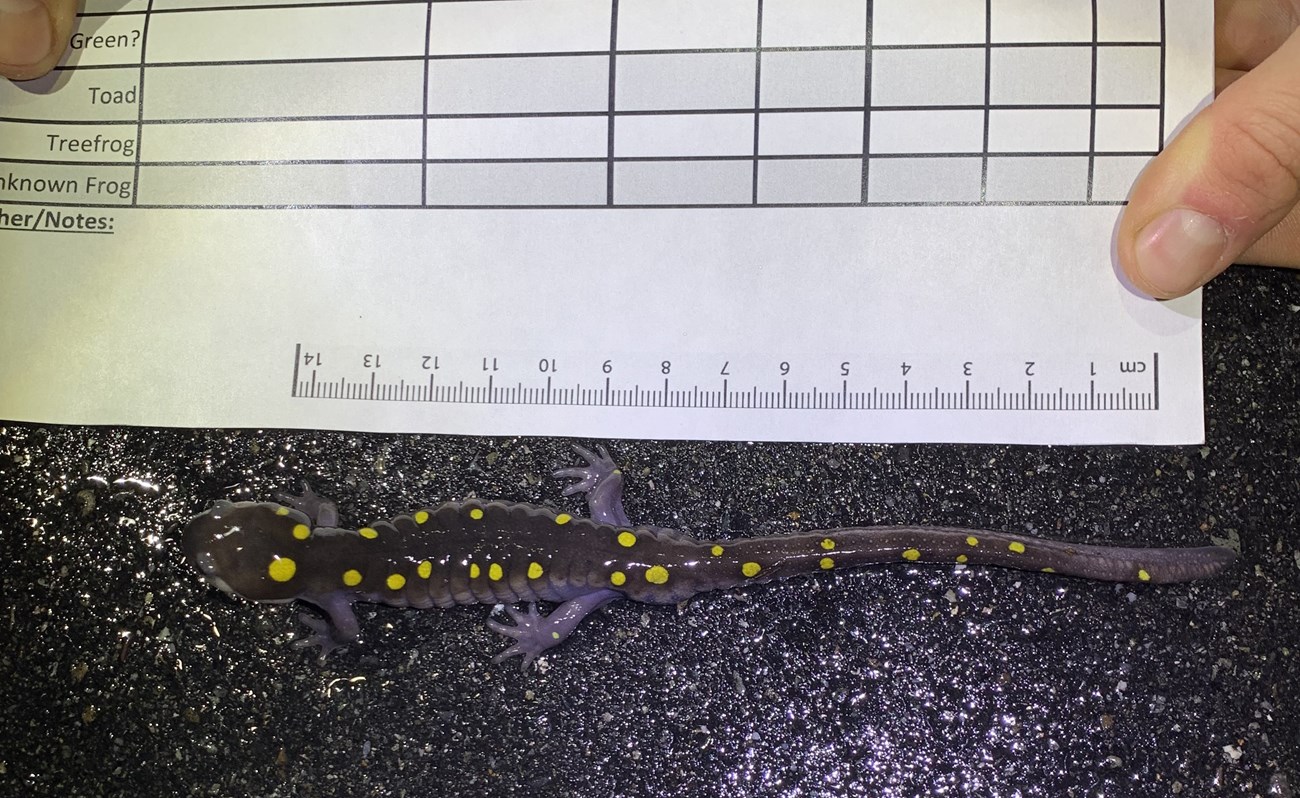Last updated: April 5, 2024
Article
Research Brief: Informing Management of Amphibian Road Crossings in Acadia National Park

NPS Photo // Jack Byrley

Image courtesy of Marisa Monroe
Unfortunately, these animals are as vulnerable as they are vital. Amphibian numbers are declining worldwide due to a variety of factors, with Acadia’s inhabitants being no exception. One reason behind their fragility is the fact that they have both terrestrial and aquatic life phases. Because many of these amphibians migrate seasonally in order to reach their breeding wetlands, roads bisecting the landscape pose a serious danger to these animals. Rural roads in particular are a concern, such as the network of park-maintained roads within Acadia.
As climate change and park visitation cause the timing of seasonal road closures to fluctuate, developing a means of observing these effects is essential and will help park managers inform future decisions.
Acadia Science Fellow and University of Maine graduate student Marisa Monroe hopes to gain a deeper understanding of these animals and the risks they face. Monroe plans to survey Acadia National Park over a span of two field seasons. The field seasons will begin early spring and last through late fall. Individual surveys will take place on park roads during rainy nights. Volunteer surveyors will travel on foot or by bike documenting living and dead amphibians.

Image courtesy of Chiara Jeanfils
"Right now we don’t know when or where amphibians are crossing our roads, especially outside of the early spring rush to lay eggs,” said Acadia National Park Wildlife Biologist Bik Wheeler. “This work will give us a much fuller understanding of amphibian movements and how we can best protect them."
Ultimately, Monroe will create a set of resources to protect amphibians in the future. She will use survey data to map out amphibian-crossing hotspots, allowing researchers and park managers to better analyze risk, predict amphibian behavior, and protect these animals. This study’s baseline will inform both future amphibian research at Acadia, as well as research at other NPS sites. The new survey methods, citizen science engagement, and data collection proposed by Monroe will help keep Acadia’s forests and wetlands colorful with newts, salamanders, and frogs, with far-reaching repercussions throughout the ecosystem.

Image courtesy of Chiara Jeanfils
